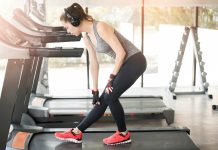
A group of scientists at the University of Southern California (USC) has made a major discovery that could help people with osteoarthritis.
Osteoarthritis is a common condition that causes pain and stiffness in the joints. It usually affects older adults and happens when the smooth tissue called cartilage, which covers the ends of bones, slowly breaks down.
Without enough cartilage, the bones rub against each other, leading to swelling and discomfort. This can make it hard to do everyday activities like walking or using your hands.
Right now, there is no cure for osteoarthritis. Doctors usually try to manage the pain with medicine, physical therapy, or surgery. But these treatments don’t fix the root problem, which is the aging and damage of the cartilage itself.
The new study from USC takes a different approach. The researchers looked at a protein in the body called STAT3. This protein helps control how cells grow and repair themselves.
The research team, led by Dr. Denis Evseenko, found that STAT3 might help make old cartilage cells act young again. These cells, called chondrocytes, are important because they keep our joints smooth and flexible.
As we get older, chondrocytes don’t work as well. They can’t fix damage like they used to. This leads to the symptoms of osteoarthritis. But in the USC lab, when the scientists activated STAT3 in these aging cells, the cells started working more like younger ones. They could repair the tissue and reduce damage. It was like turning back the clock.
The scientists also used something called an “epigenetic clock” to study how fast the cells were aging. This clock doesn’t measure time like a regular clock. Instead, it tracks changes in how genes work as we get older. By activating STAT3, the scientists slowed down this aging clock in the cartilage cells. When they turned STAT3 off, the cells aged faster and broke down more.
Another part of the study focused on an enzyme called DNMT3B. This enzyme works with STAT3. When STAT3 isn’t active, DNMT3B seems to speed up joint damage. In tests with mice, if STAT3 was turned off, the joint damage got worse.
Interestingly, the scientists also saw that the cartilage tried to grow back in some cases. The new cartilage looked like the type found in very young joints. But it wasn’t strong enough to work properly. This means that just making cells young again isn’t enough—we also need to help them grow the right way.
The discovery of how STAT3 works could lead to new treatments for osteoarthritis. These future treatments might not just reduce pain—they might actually repair the damage and help people avoid joint surgery.
But researchers still need to solve one big problem: how to activate STAT3 without causing inflammation. Inflammation can make joint pain worse, so it’s important to find a safe way to use this new method.
This research is still in the early stages, but it offers real hope. If scientists can find a safe way to use STAT3, it might help millions of people feel better and move more easily again. The results of this study were published in the journal Aging Cell.
If you care about pain, please read studies about vitamin K deficiency linked to hip fractures in old people, and these vitamins could help reduce bone fracture risk.
For more health information, please see recent studies that Krill oil could improve muscle health in older people, and eating yogurt linked to lower frailty in older people.
Copyright © 2025 Knowridge Science Report. All rights reserved.



